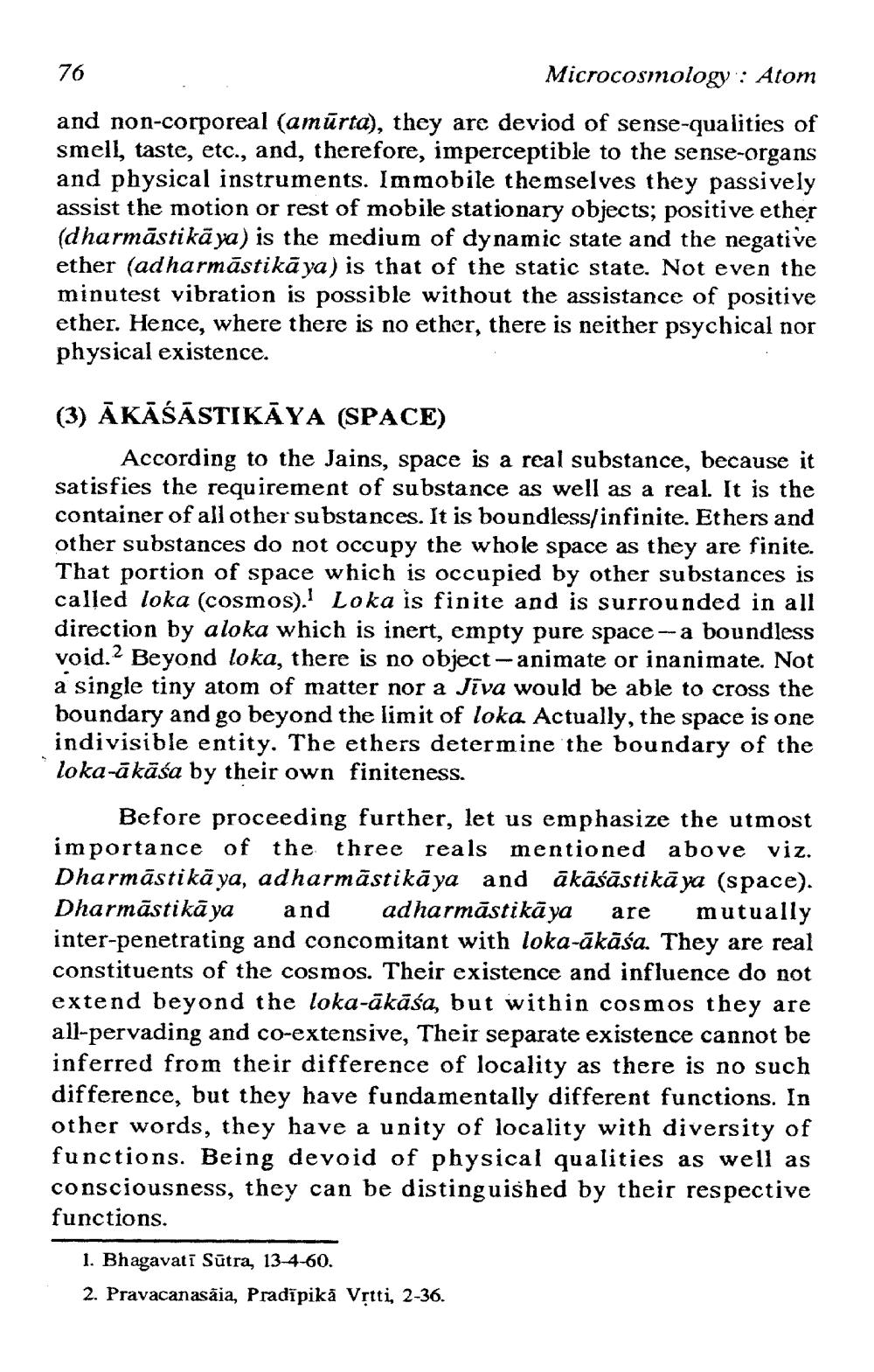________________
76
Microcosmology : Atom and non-corporeal (amūrta), they are deviod of sense-qualities of smell, taste, etc., and, therefore, imperceptible to the sense-organs and physical instruments. Immobile themselves they passively assist the motion or rest of mobile stationary objects; positive ether (dharmāstikäya) is the medium of dynamic state and the negative ether (adharmāstikāya) is that of the static state. Not even the minutest vibration is possible without the assistance of positive ether. Hence, where there is no ether, there is neither psychical nor physical existence.
(3) ĀKĀŚĀSTIKĀYA (SPACE)
According to the Jains, space is a real substance, because it satisfies the requirement of substance as well as a real. It is the container of all other substances. It is boundless/infinite. Ethers and other substances do not occupy the whole space as they are finite. That portion of space which is occupied by other substances is called loka (cosmos).' Loka is finite and is surrounded in all direction by aloka which is inert, empty pure space-a boundless void.2 Beyond loka, there is no object-animate or inanimate. Not a single tiny atom of matter nor a Jīva would be able to cross the boundary and go beyond the limit of loka Actually, the space is one indivisible entity. The ethers determine the boundary of the loka-ākāśa by their own finiteness.
Before proceeding further, let us emphasize the utmost importance of the three reals mentioned above viz. Dharmāstikāya, adharmāstikāya and ākāśāstikāya (space). Dharmāstikāya and adharmāstikāya are mutually inter-penetrating and concomitant with loka-ākāśa. They are real constituents of the cosmos. Their existence and influence do not extend beyond the loka-ākāśa, but within cosmos they are all-pervading and co-extensive, Their separate existence cannot be inferred from their difference of locality as there is no such difference, but they have fundamentally different functions. In other words, they have a unity of locality with diversity of functions. Being devoid of physical qualities as well as consciousness, they can be distinguished by their respective functions.
1. Bhagavati Sūtra, 13-4-60. 2. Pravacanasāia, Pradīpikā Vrtti, 2-36.




